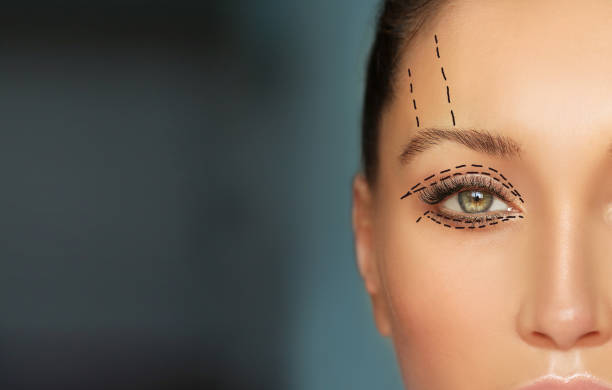Upper vs. Lower Blepharoplasty: Eye Surgery Options
1. Introduction
1.1 Overview of Blepharoplasty
Blepharoplasty, commonly referred to as eyelid surgery, is a cosmetic procedure designed to enhance the appearance of the eyes by addressing issues such as sagging skin, puffiness, and drooping eyelids. This procedure can rejuvenate the upper or lower eyelids, making patients look younger and more refreshed. blepharoplasty surgery in Abu Dhabi has become a popular choice for individuals seeking to improve their eye aesthetics and facial harmony.
1.2 Popularity of Eye Surgery in Abu Dhabi
In recent years, the demand for eye surgeries in Abu Dhabi has surged. The city’s reputation for high-quality healthcare and access to experienced surgeons has made it a top destination for cosmetic procedures like blepharoplasty. Both residents and medical tourists are drawn to Abu Dhabi for its advanced facilities and skilled professionals.
2. What is Blepharoplasty?
2.1 Definition and Purpose
Blepharoplasty is a surgical procedure that removes excess skin, fat, and muscle from the eyelids to create a more youthful appearance. This surgery can be performed on the upper eyelids, lower eyelids, or both, depending on the patient’s needs. It can address functional issues such as impaired vision due to drooping lids and cosmetic concerns like puffiness and wrinkles around the eyes.
2.2 Types of Blepharoplasty
There are two main types of blepharoplasty:
- Upper Blepharoplasty: Focuses on the upper eyelids, addressing droopy or sagging skin.
- Lower Blepharoplasty: Targets the lower eyelids, often correcting puffiness, bags, or wrinkles beneath the eyes.
3. Upper Blepharoplasty
3.1 What is Upper Blepharoplasty?
Upper blepharoplasty is a procedure designed to remove excess skin and fat from the upper eyelids, which can create a more open and alert look. It is commonly sought by individuals who experience sagging or droopy eyelids that may obscure vision or affect their appearance.
3.2 Common Reasons for Upper Blepharoplasty
Patients opt for upper blepharoplasty for both functional and aesthetic reasons. Over time, the skin around the eyes can lose elasticity, leading to drooping eyelids. This can impair vision or give a tired, aged appearance. Upper blepharoplasty corrects these issues, restoring a youthful and refreshed look.
3.3 The Procedure: What to Expect
During the surgery, a small incision is made in the natural crease of the eyelid, allowing the surgeon to remove or reposition excess skin and fat. The incision is then closed with fine sutures, minimizing visible scarring. The procedure typically takes about one to two hours and is performed under local anesthesia with sedation.
4. Lower Blepharoplasty
4.1 What is Lower Blepharoplasty?
Lower blepharoplasty focuses on the area below the eyes, targeting issues like puffiness, dark circles, and sagging skin. It’s a popular choice for individuals looking to reduce the appearance of under-eye bags and wrinkles, giving them a smoother, more youthful look.
4.2 Common Reasons for Lower Blepharoplasty
The lower eyelids can develop puffiness due to the natural aging process, genetic factors, or fluid retention. Lower blepharoplasty addresses these issues by removing or redistributing fat deposits, smoothing wrinkles, and tightening the skin.
4.3 The Procedure: What to Expect
In a lower blepharoplasty, the surgeon makes an incision just below the lash line or inside the lower eyelid. Excess fat is removed or repositioned, and the skin is tightened to reduce the appearance of bags or wrinkles. The procedure usually takes about one to two hours and is often performed under local or general anesthesia.
5. Upper vs. Lower Blepharoplasty: Key Differences
5.1 Surgical Techniques
While both upper and lower blepharoplasty involve the removal of excess skin and fat, the techniques vary based on the targeted area. Upper blepharoplasty focuses on the skin above the eyes, while lower blepharoplasty addresses the area below the eyes.
5.2 Targeted Areas
Upper blepharoplasty targets the upper eyelids, typically for issues like drooping skin, whereas lower blepharoplasty is aimed at reducing puffiness, bags, and wrinkles under the eyes.
5.3 Recovery Process
The recovery for both types of blepharoplasty is similar, but patients undergoing lower blepharoplasty may experience more swelling and bruising. Recovery usually takes one to two weeks, with most patients returning to normal activities within 10 to 14 days.
6. Who is a Good Candidate for Upper Blepharoplasty?
6.1 Signs You Need Upper Blepharoplasty
If you notice drooping upper eyelids, sagging skin, or impaired vision due to excess eyelid skin, you may be a good candidate for upper blepharoplasty.
6.2 Age and Health Considerations
Ideal candidates are generally in good health and have realistic expectations. While there is no set age for upper blepharoplasty, it is commonly performed on individuals over 40 who are beginning to see signs of aging around their eyes.
7. Who is a Good Candidate for Lower Blepharoplasty?
7.1 Signs You Need Lower Blepharoplasty
Lower blepharoplasty is ideal for individuals with under-eye bags, puffiness, or wrinkles that are resistant to non-surgical treatments.
7.2 Age and Health Considerations
Candidates should be in good overall health, and while the procedure is commonly performed on people over 40, younger individuals with genetic predispositions to under-eye bags may also benefit from the surgery.
8. Risks and Complications
8.1 Risks Associated with Upper Blepharoplasty
Upper blepharoplasty carries some risks, such as infection, scarring, or difficulty closing the eyes. However, these complications are rare when the procedure is performed by a qualified surgeon.
8.2 Risks Associated with Lower Blepharoplasty
Lower blepharoplasty risks include dry eyes, temporary double vision, or asymmetry. These risks are minimized when patients follow post-operative care instructions and choose experienced surgeons.

